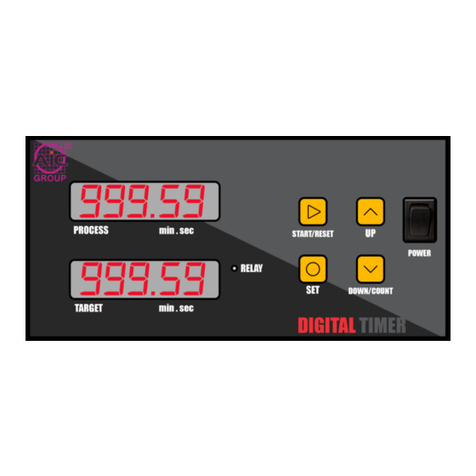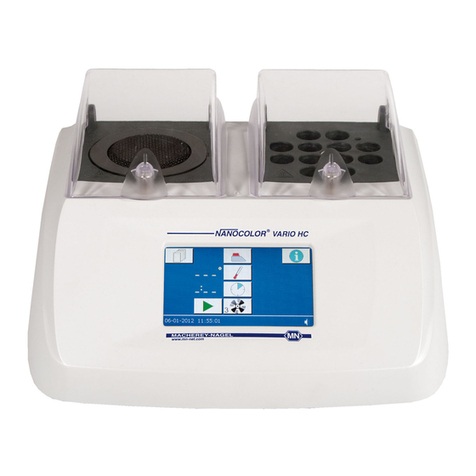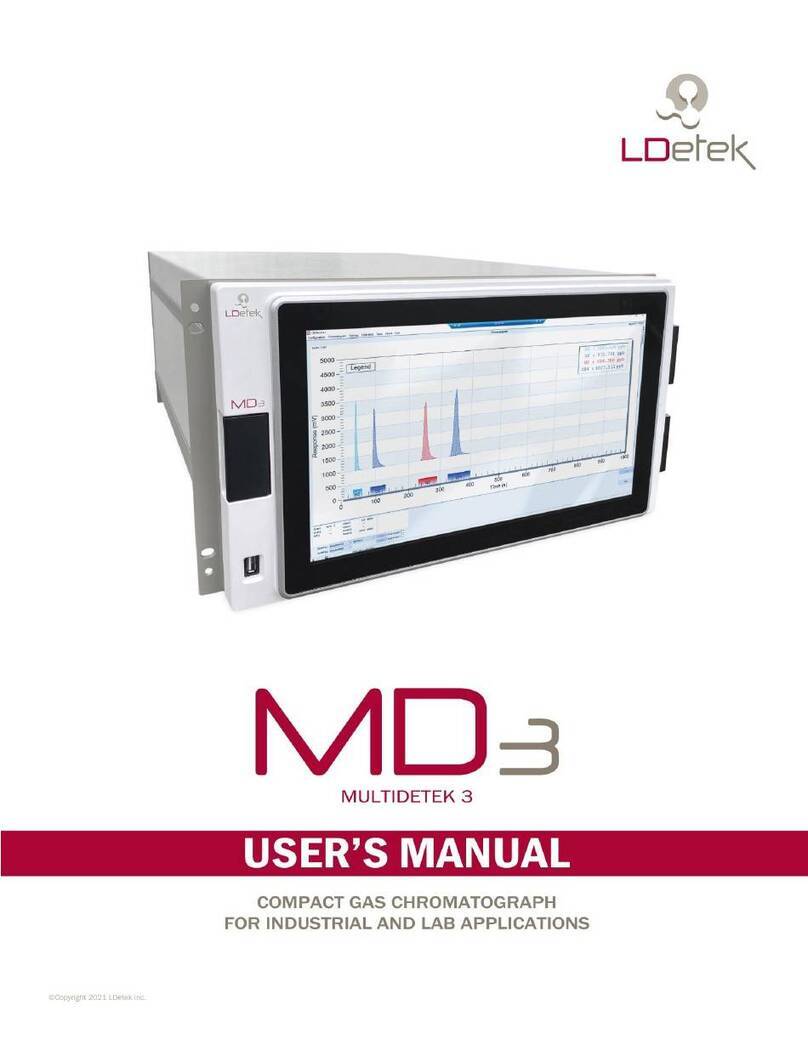Giatec Scientific SURF User manual

Surf™User Manual
USER MANUAL
SURF™
S U R F A C E R E S I S T I V I T Y O F C O N C R E T E U S I N G
W E N N E R F O U R - E L E C T R O D E M E T H O D
Smart Concrete Testing Technologies™


Surf™User Manual
©Giatec Scientific Inc. i
TABLE OF CONTENTS
PACKAGE CONTENTS .............................................................................................. III
WARRANTY .......................................................................................................................V
SAFETY INSTRUCTIONS............................................................................................1
GENERAL GUIDELINES ...................................................................................................1
INTRODUCTION TO GIATEC SURF™ ...............................................................4
ELECTRICAL RESISTIVITY OF CONCRETE......................................................................4
APPLICATIONS ...................................................................................................................5
MEASUREMENT CONCEPT ..............................................................................................6
DEVICE OVERVIEW..........................................................................................................8
Measuring Device .............................................................................................................8
Sample Holder .................................................................................................................9
TEST SETUP.....................................................................................................................11
DEVICE OPERATION.................................................................................................13
STAND-ALONE OPERATION.........................................................................................13
DATA MONITOR SOFTWARE OPERATION .................................................................18
FIRMWARE UPGRADE.....................................................................................................24
DEVICE VERIFICATION .................................................................................................28
MESSAGES.........................................................................................................................31
IN STA LL IN G DA TA M ON I TOR S OF TWAR E ....................................33
DEVICE DRIVER..............................................................................................................33
INSTALLING DATA MONITOR SOFTWARE .................................................................36
MAINTENANCE...............................................................................................................37
SERVICE ............................................................................................................................37
REPLACEMENTS...............................................................................................................37
SURF™TECHNICAL SPECIFICATIONS............................................................38

Surf™User Manual
©Giatec Scientific Inc. iii
PACKAGE CONTENTS
Item
Qty
Photo
Surf™Measurement
Device
1X
Surf™Cell with
Connector Cable
1X
Verification Dongle
(High Range +Low
Range)
2X
Handheld probe (optional
accessory)
1X
Surf™Data Monitor
Software
1X
External Power Supply
1X

Surf™User Manual
©Giatec Scientific Inc. iv
USB Communication
Cable
1X
Conductive Gel
1X
Conductive pads
16X
Note: Figures displayed above are not in scale.

Surf™User Manual
©Giatec Scientific Inc. v
WARRANTY
LIMITED WARRANTIES
Giatec warrants the Product against defects in materials and workmanship
under normal use (the “Warranty”) for a period of 12 months from the
Delivery Date (the “Warranty Period”), on the condition that the Product
has been completely paid for. Unless as otherwise mandated by local law, the
Warranty Period does not restart if Customer receives a replacement
appliance and/or replacement Software. This Warranty does not apply: (a) to
consumable parts, such as batteries, Plexiglas cell units and cables unless
damage has occurred due to a defect in materials or workmanship; (b) to
cosmetic damage, including but not limited to scratches, dents and broken
plastic on ports; (c) to damage caused by accident, abuse, misuse, neglect or
failure to properly maintain (to include but not limited to water damage
and/or condensation or improper temperatures during storage), or improper
installation; (d) to damage caused by electrical disturbances or acts of God,
to include but not limited to civil disturbance, war, flood, fire, rodents or
insects; (e) where manufacturer’s serial numbers and security labels have been
removed from the Product; and (f) to damage caused during shipment (due
to Customer’s improper packaging) from Customer to Giatec in the case of
Product returns for repair.
Giatec disclaims all other warranties, express or implied, including without
limitation implied warranties of merchantability, fitness for a particular
purpose, or against hidden or latent defects. Giatec’s responsibility for
warranty claims is limited to repair or replacement. Giatec reserves the right
to modify this Warranty at any time, at its sole discretion, and with notice to
Customer.
Giatec does not warrant that the operation of the Product will be
uninterrupted or error-free. Giatec is not responsible for damage arising from
failure to follow instructions relating to the Product’s use. This Warranty is
voided immediately if repair, modification (to include upgrades, expansions
or usage or addition of non-manufacturer parts or accessories), alteration or
other service is attempted other than by Giatec. In this regard, the integrity

Surf™User Manual
©Giatec Scientific Inc. vi
of the appliance casing (aka the box) should not be violated for any reason,
unless expressly authorized by Giatec in writing.
THE WARRANTY SET FORTH IS EXCLUSIVE AND NO OTHER
WARRANTY, WHETHER WRITTEN OR ORAL, IS EXPRESSED OR
IMPLIED. GIATEC SCIENTIFIC INC. SPECIFICALLY DISCLAIMS
THE IMPLIED WARRANTIES OF MERCHANTABILITY AND
FITNESS FOR A PARTICULAR PURPOSE.
*Please refer to the complete Terms and Conditions of Giatec’s products for more
details.
*The information contained in this document is subject to change without notice.

Surf™User Manual
©Giatec Scientific Inc. 1
SAFETY INSTRUCTIONS
This chapter contains important safety instructions that you must follow
when operating Surf™and keeping it in storage. Read the following before
any operation to ensure your safety and to keep the instrument in good
condition. Keep the user manual in a safe place for future reference.
SAFETY SYMBOLS
In order to ensure the safety of the operator, and increase the service life of
the instruments, pay attention to safety precautions described in this manual.
These messages are indicated by a symbol throughout this manual.
WARNING: Identifies conditions or practices that could result
in injury or loss of life.
CAUTION: Identifies conditions or practices that could result
in damage to Giatec Surf™or to other properties.
ATTENTION: Refer to the User Manual
GENERAL GUIDELINES
1. Always follow basic safety precautions when using this product to reduce
risk of injury from fire or electric shock.
2. Read and understand all instructions in the documentation that come
with Giatec Surf™.
3. Observe all warnings and instructions marked on the product.
DEVICE HANDLING
CAUTION
Giatec Surf™device is a delicate testing instrument. The electronic parts and
test cells are sensitive components. Please handle them with care.
•Do not place any heavy object on the Surf™device.
•Avoid severe impact or rough handling that leads to damaging Surf™.
•Do not discharge static electricity to Surf™.
•Do not disassemble Surf™.

Surf™User Manual
©Giatec Scientific Inc. 2
•Install the product in a protected location where no one can step on,
or trip over the power cord. Keep the device in a location where the
power cord cannot be damaged.
OPERATION
WARNING
•Device AC Input Voltage: 5V, 250 mA
•Only use the provided power supply adapter for operating Surf™.
•Do not perform measurement at circuits directly connected to Mains
(Live circuit).
•Place the instrument in a place where the chance of spilling liquids
on the device is negligible.
CLEANING THE INSTRUMENT
ATTENTION
•Unplug this device from wall outlets before cleaning.
•Use a soft cloth dampened in a solution of mild detergent and water.
•Do not use chemicals or cleaners containing harsh products such as
benzene, toluene, xylene, and acetone.
OPERATION ENVIRONMENT
ATTENTION
•Location: Indoor, no direct sunlight
•Relative Humidity: 30% to 80%
•Temperature: 15°C to 45°C
STORAGE ENVIRONMENT

Surf™User Manual
©Giatec Scientific Inc. 3
ATTENTION
•Location: Indoor
•Relative Humidity: 5% to 90%
•Temperature: 0°C to 60°C

Surf™User Manual
©Giatec Scientific Inc. 4
INTRODUCTION TO GIATEC Surf™
Giatec Surf™is an advanced laboratory test device for measuring the surface
electrical resistivity of hardened concrete cylinders or cores using the Four-
Electrode measuring technique. Surface electrical resistivity technique has
been standardized by AASHTO T 385.
The device can be operated as a stand-alone unit for measuring electrical
resistivity in concrete samples. Alternatively, it can be controlled using Data
Monitor software (for PC). This software provides a user-friendly tool to
setup and run different test programs. The software provides real-time data
visualization (tabulated data and live chart), and provides a convenient way
to save the test results and generate report files.
ELECTRICAL RESISTIVITY OF CONCRETE
Durability of concrete depends largely on the properties of its microstructure
such as pore network size and interconnections. A finer pore network with
fewer connectivity, leads to lower permeability. Porous microstructure with
a larger degree of interconnections, on the other hand, generally results in
higher permeability and reduced durability.
The principle idea behind the electrical resistivity techniques is to quantify
the conductive properties of the microstructure of concrete. The electrical
resistivity of concrete can be described as the ability of concrete to withstand
the transfer of ions subject to an electrical field. In other words, resistivity is
the inverse of conductivity, which can be attributed to the degree of ionic
movement in the pores. In this context, resistivity measurement can be used
to assess the size and extent of the interconnectivity of pores. Electrical
resistivity measurement provides a non-destructive approach to testing
concrete materials, making it suitable for various quality control projects,
condition assessment purposes, and research programs. Electrical resistivity
is an inherent characteristic of concrete, and is independent of the geometry
of the concrete sample.

Surf™User Manual
©Giatec Scientific Inc. 5
APPLICATIONS
Electrical resistivity of concrete is well correlated with certain performance
characteristics of concrete such as the chloride diffusion coefficient, water
absorption, and the corrosion rate of embedded steel.
Electrical resistivity can be used as a measure of concrete resistance to
chloride penetration. Similar to the Rapid Chloride Permeability (RCP) test,
electrical resistivity measurement can be used in evaluating the ionic mobility
within the pore solution of concrete. The RCP test was originally developed
to quantify the chloride penetrability based on the electric charge passing
through concrete over a specific period of time. Experiments show that there
is good correlation between the surface electrical resistivity and the Rapid
Chloride Permeability (RCP).
The qualitative relation between rapid chloride penetrability, RCP (ASTM
C1202) and the surface electrical resistivity of concrete is presented in Table
1.
Table 1: Relationship between surface resistivity and chloride penetrability*
Chloride
Penetration
56-Day Rapid Chloride Penetrability
Charge Passed as per ASTM C1202
28-Day Surface
Resistivity**
(Coulombs)
(kΩ.cm)
High
>4,000
<10
Moderate
2,000-4,000
10-15
Low
1,000-2,000
15-25
Very Low
100-1,000
25-200
Negligible
<100
>200
* Adapted from Kessler et al. 2005
** At 23 °C

Surf™User Manual
©Giatec Scientific Inc. 6
Surf™is a laboratory device for measuring the surface electrical resistivity of
concrete samples or concrete cores. This technique can be utilized for various
applications such as:
•Performance-based quality control of concrete
•Estimation of the chloride diffusion coefficient in concrete
•Service life design of concrete structures
•Estimation of the remaining life of concrete structures
•Crack detection in concrete elements under load
•Monitoring the setting time in fresh concrete
MEASUREMENT CONCEPT
Concrete is a porous composite material, and depending on the moisture
content (i.e., degree of the saturation of the pores), it may exhibit conductive
or insulated characteristics. For example, a concrete sample might exhibit
very high electrical resistance when it is dry, but the same concrete can have
much lower resistance in saturated condition. Moreover, concrete has
capacitive properties, which means it can hold electrical charge.
In engineering terminology, the concept of ‘impedance’ should be used to
account for the impeding effect of the electrostatic storage of charge in
concrete in addition to the normal resistance of concrete. Impedance,
Z
, is
described as a complex quantity that has an imaginary component called
reactance,
X
, and a real component called resistance,
R
. In other words, the
vector summation of these two components would result in an impedance
vector,
Z
. Therefore, the electrical impedance
Z
can be also represented by
a magnitude (Z) and a phase angle (φ) (Fig.1). Both the magnitude and phase
angle of such a vector could vary depending on the frequency of the applied
current.

Surf™User Manual
©Giatec Scientific Inc. 7
Figure 1: Impedance vector: Real and Imaginary components
Fig. 2 depicts the general concept behind the measurement of surface
electrical resistivity using Giatec Surf™.
Figure 2: Schematic view of the test setup and the concept
One widely accepted setup is the Wenner array where the four electrodes are
situated in a straight line and equally spaced; the two inner electrodes measure
the electrical potential,
V
, created when the exterior electrodes insert an AC
current,
I
, into the concrete. For a semi-infinite, homogeneous concrete, the
surface electrical resistivity is calculated as:
I
V
aπ2ρ=
where ais the distance between the electrodes (equally spaced).
Im
Re
(Reactance)
X
R
|Z|
(Resistance)
a
a

Surf™User Manual
©Giatec Scientific Inc. 8
DEVICE OVERVIEW
Giatec Surf™has two main components: A measuring device (Fig. 3), and a
sample holder. (Fig. 6). The measuring device can be used as a stand-alone
equipment to perform the tests. It can also be connected to a personal
computer (PC) using the USB connection port. The Data Monitor software,
provided in the package, controls the device and can be used to record the
test data. In this section, the key functions of these components are
described.
Measuring Device
Surf™measuring device can be used as a standalone data logger. The user can
select the test method, and perform the test by using the control keys on the
front panel of the device. The back panel provides connection terminals to
the sample holder of the device.
Figure 3: Surf™Measuring Device
The front panel of the measuring device includes display, as well as, the
control keypad. The sample holder electrodes are connected to the measuring
device using the cables included in the package.

Surf™User Manual
©Giatec Scientific Inc. 9
Figure 4: Front Panel
1. Main Power Key
2. Control Keypad
3. Display
Figure 5: Back Panel
1. Power Inlet
2. Channels (1 to 4)
3. USB Communication Port
Sample Holder
Surf™sample holder is designed to facilitate the eight time measurements of
resistivity around the test sample as specified by AASHTO T 385 standard.
It also reduces evaporation rate during the test. The sample holder has four
sets of electrodes, placed at 90˚array.
1
2
3
2
1
3

Surf™User Manual
©Giatec Scientific Inc. 10
Figure 6: The Surf™ sample holder
1. Sample holder supports
2. Sample holder lid
3. Electrode(s)
4. Connection cables
Handheld Probe (optional)
Handheld probe is design to test concrete samples which do not fit in the
sample holder. It can also be used to perform in-situ tests on concrete
components.
Figure 7: The Surf™Handheld probe
1. Handheld probe
2. Electrodes
3. Connection port
1
2
3

Surf™User Manual
©Giatec Scientific Inc. 11
T E ST S E TU P
To start using Surf™, the user must set up the concrete sample in the sample
holder. Surf™sample holder provides a convenient approach to setting up
concrete samples. The sample holder reduces the rate of evaporation, and
eliminates the need for marking and rotating concrete samples.
Preparing the Sample Holder
Step 1: Connect the sample holder to the back panel of the measuring device.
If you want to use the device with the Data Monitor program (PC), you need
to use the USB cable provided in the package.
Figure 8: Connecting the sample holder and the USB cable to the measuring
device
Step 2: Remove concrete sample from the curing room and place it in the
sample holder. Align the top and bottom end of the concrete cylinder with
the rubber supports inside the sample holder.
USB Connection Cable
Ch-4
Ch-3
Ch-2
Ch-1
Power Cable

Surf™User Manual
©Giatec Scientific Inc. 12
Figure 9: Place the concrete sample inside the sample holder
Preparing the Handheld Probe (Optional)
Step 1: Using the connection cable, connect the one end of the cable to the
handheld probe.
Step 2: Follow the instructions in Fig. 8 to connect the other end of the cable
to any of the channels on the back of the surf device.
Step 3: Wet the sponges and place them at the tip of the electrodes.
Figure 10: Connecting handheld probe to the surf measurement device
Table of contents
Popular Laboratory Equipment manuals by other brands

Helmer Scientific
Helmer Scientific OuickThaw DH2 Operation manual
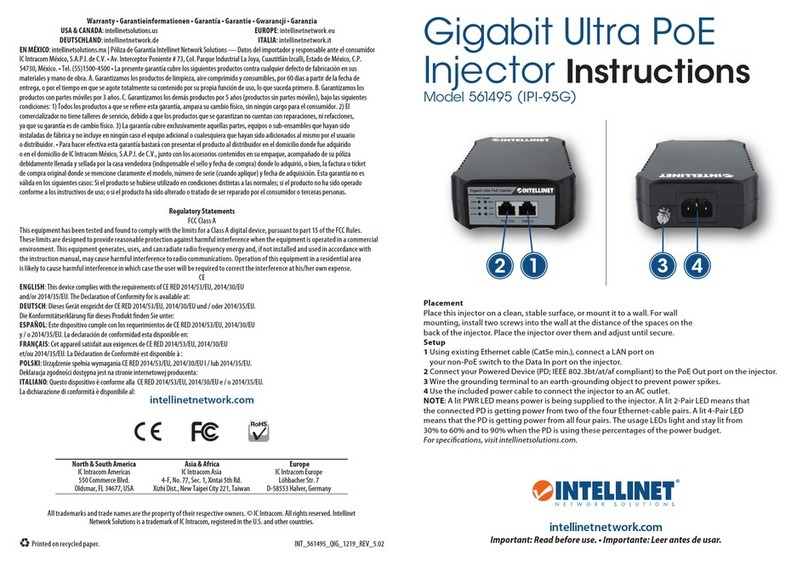
Intellinet
Intellinet 561495-UK instructions
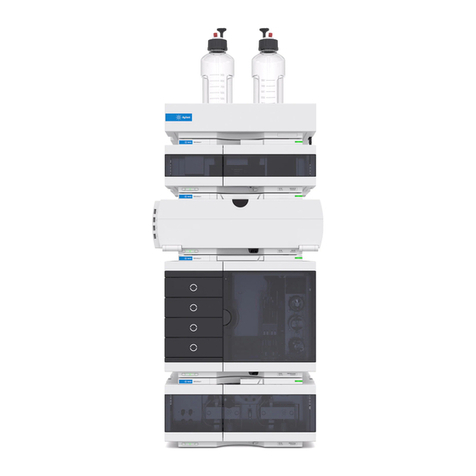
Agilent Technologies
Agilent Technologies 1260 Infinity quick start guide
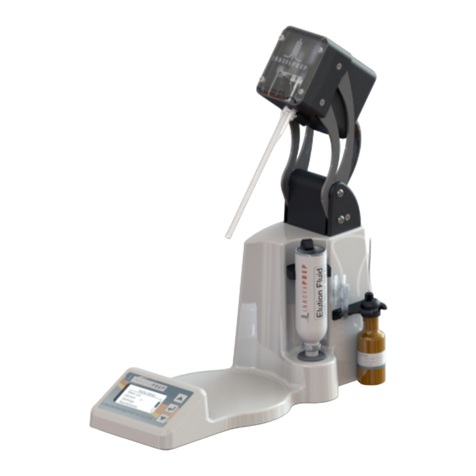
InnovaPrep
InnovaPrep CP Select quick start guide

Thermo Scientific
Thermo Scientific FOCUS GC Site preparation and installation manual
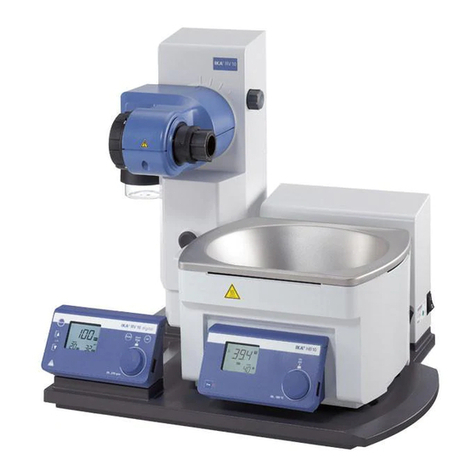
IKA
IKA RV 10 control Service manual
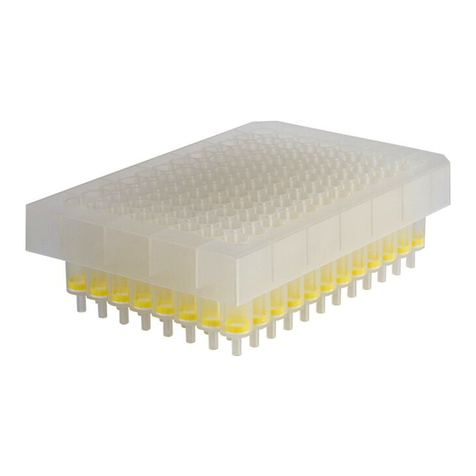
Macherey-Nagel
Macherey-Nagel NucleoMag 96 PCR user manual
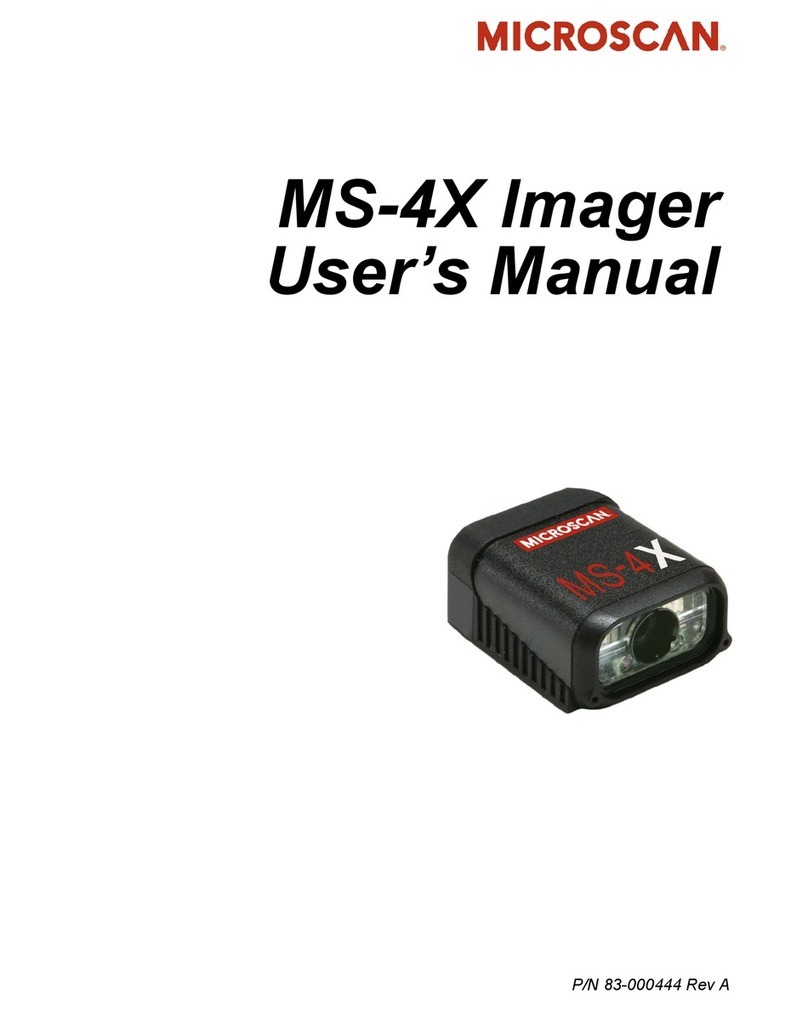
Microscan
Microscan MS-4X user manual
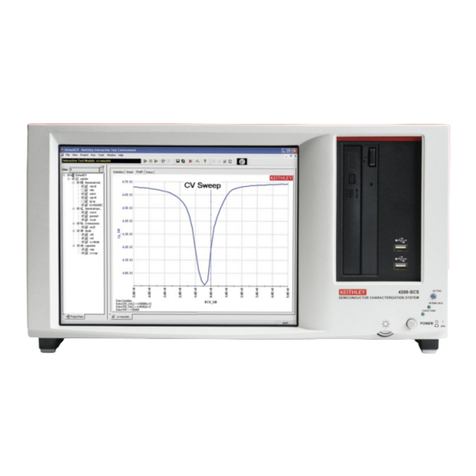
Keithley
Keithley 4200-SCS-PK3-903-01 quick start guide
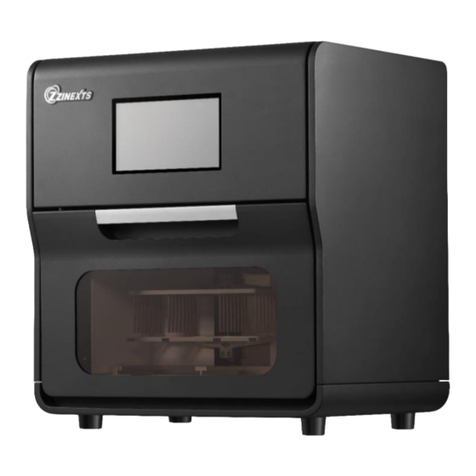
ZINEXTS
ZINEXTS ZiXpress 32 Dx system instruction manual

Laarmann
Laarmann LMFC250 user manual

Heathrow Scientific
Heathrow Scientific MagFuge instruction manual


